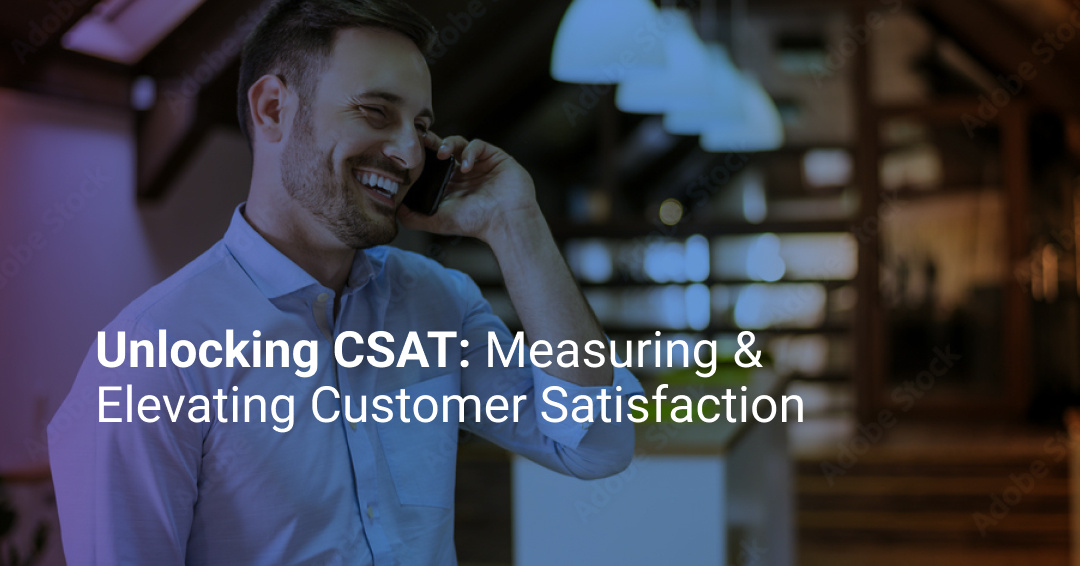12 Call Center Metrics You Should Be Using to Improve CX in 2025
Call center metrics are the most important performance indicators that monitor how effectively your call center is running. This includes anything...

In the past, customer experiences were either physical or digital. But today, more and more brands are adopting a phygital approach, which combines the best of both worlds. Phygital CX offers a seamless and integrated experience that can be accessed across multiple channels.
But before getting into it, you may be wondering, "What's the meaning of 'phygital'?"
The word "phygital" is a portmanteau of the words "physical" and "digital." It is used to describe the convergence of the physical and digital worlds. Phygital experiences are those that blend the two worlds together, creating a seamless and integrated experience for the user.
Some examples of phygital experiences include:
Phygital experiences are becoming increasingly common as technology advances. They offer a number of benefits for both businesses and customers. For businesses, phygital experiences can help to improve customer engagement, increase sales, and reduce costs. For customers, phygital experiences can provide a more convenient, personalized, and immersive experience.
The phygital experience initially aimed to bridge online and in-store experiences, driven by e-commerce and omnichannel systems. It integrated features like click-and-collect, digital signage, and AR. As consumer expectations grew, it expanded into other sectors like entertainment, healthcare, and finance. The advent of IoT, VR, and AI has further accelerated this new way of understanding the digital and physical experience, enabling more interactive and data-driven environments.
Today, the phygital trend combines digital devices and tools with physical interactions, creating a user experience that mixes the best of both worlds. Using technologies like AR in retail and remote diagnostics in healthcare to enhance real-world experiences brands have become more user friendly and effective helping users solve their problems. As this digital transformation path progresses, AI and machine learning will quite likely play a role, allowing brands to create even more impressive experiences to make everyone’s lives better.
Experiences that combine the physical and digital worlds have multiple benefits for companies and users. In the next section, we will discuss some of the benefits companies across industries have experienced with phygital applications.
Phygital experiences can make it easier for customers to get what they want when they want it. For example, a customer can use a mobile app to order food from a restaurant and deliver it to their home.
Given today's competitive markets, being the convenient option that goes the extra mile to make it easier does not go unnoticed. If the experience is positive, companies will also get positive word-of-mouth motions, which can turn into revenue.
Phygital experiences can be personalized to the individual customer. For example, a customer can use a virtual reality headset to try on different clothes or furniture before they buy them.
By helping customers make better decisions with personalized experiences, you will stand out in your category. In a world where everyone is more exposed to information and group-think ideas, leveraging personalization can help companies across industries become the preferred brand in their market.
Phygital experiences can be more immersive than traditional digital experiences. For example, a customer can use a mobile app to scan a product in a store and see additional information about it, such as reviews, ratings, or how-to videos.
With immersive experiences, customers can move from a purely rational purchasing experience to a more emotional and meaningful experience. Given that many of our money decisions are more emotional than we anticipate, this can make a significant difference in your bottom line.
A common problem companies face is the lack of customer insights based on data in physical locations. By incorporating phygital experiences, you get the best of both worlds: a memorable experience and user information that allows you to make better decisions in the future.
Phygital experiences are a source of information that helps companies improve their understanding of their users while creating a better experience.
Given the technological advancements in the last years and the technological devices penetration (phones, VR headsets, etc.,) implementing phygital experiences is more cost-effective than ever. The type of experiences that you would find only in modern art museums a few years back can now be adapted by brands without spending a fortune.
Becoming a memorable brand in saturated markets is essential. Phygital experiences are a way to create a different experience that sticks without reinventing the wheel but combining the best of the digital and physical worlds.
If you're looking to improve your customer experience, a phygital CX strategy is a great place to start. Here are some tips on how to design a successful phygital CX strategy:
What do your customers want and need from their experiences? What are their pain points? Once you understand your customers, you can start to design a phygital CX strategy that meets their needs.
The best way to start experimenting is to create small projects to quickly learn what your customers prefer. For example, if you have multiple audiences, trying both a small pilot with AR and another one with mobile devices can help you learn what they prefer and what to develop fully at a later stage.
Many technologies can be used to create phygital experiences. For example, you can use augmented reality (AR) and virtual reality (VR) to create immersive and interactive experiences. You can also use artificial intelligence (AI) to provide personalized recommendations and support.
Whatever you do, remember that understanding your audience, their habits, and preferences is the key to creating a successful experience.
The key to a successful phygital CX strategy is creating a seamless experience between the physical and digital worlds. This means ensuring your customers can easily access the same information and services no matter which channel they're using.
While you should be able to create a bridge between both worlds, it is essential to ensure all customers can get the same experience no matter where they establish contact with your brand.
One of the biggest benefits of phygital CX is that it allows you to personalize each customer's experience. You can use data and analytics to understand your customers' individual needs and preferences and then use this information to create a more personalized experience.
For many industries, this is the future of their business. With the hyper-competitive markets across most verticals, providing your customers with the right type of information, services, and products they need when they need them is a game changer.
Measuring the results of your phygital CX strategy is essential to see what's working and what's not. This will help you to make necessary adjustments and improvements over time. Remember to start with a small pilot to learn what has more traction. Then, a more robust program should be developed to serve a larger audience.
Given the new technologies being developed and the penetration of mobile devices and technologies, phygital experiences are becoming a new way for brands to stand out. While there are examples across verticals and industries, here are three examples from different markets to see some of the potentials of the phygital experience for your brand and customers.
IKEA uses a phygital CX strategy to help customers design their dream kitchens. Customers can use the IKEA app to scan products in-store and see how they would look in their own homes. They can also use the app to create a 3D model of their kitchen and make changes to the layout.
Sephora uses a phygital CX strategy to help customers find the right beauty products. Customers can use the Sephora app to scan their faces and see how different products would look on them. They can also use the app to get personalized recommendations from beauty experts.
Nike uses a phygital CX strategy to help customers create their own custom shoes. Customers can use the Nike app to design their own shoes, and then they can pick them up in-store or have them shipped to their home.
These are just a few examples of how phygital CX can be used to improve customer experiences. If you're looking to create a more engaging and personalized experience for your customers, a phygital CX strategy is a great place to start.
When increasing phygitality of your brand, the first thing to consider is your exisiting customer service process. Many businesses have an IVR or chatbot answering calls and texts from customers. Upgrading to an intelligent virtual agent (IVA) creates new opportunities to create phygital experiences.
Phone-and-text-based virtual agents can create phygital experiences that improve customer service in a number of ways. Here are a few examples:
By providing these and other services, IVAs can help create phygital experiences that improve customer service. These experiences can be more convenient, personalized, and immersive than traditional customer service experiences.
Here are some additional benefits of using IVAs to create phygital experiences:
Overall, IVAs can be a valuable tool for businesses that are looking to create phygital experiences that improve customer service.
While most industries can benefit from implementing phygital experiences, primarily, those that have a concrete physical presence are the ones that can most effectively use this new way of interacting with customers.
For example, retail stores or grocery stores that have a physical location can implement phygital experiences more intuitively than digital products, given the nature of their business. However, that does not mean that online products and services can’t go phygital, but rather, that they require a more creative approach connected with user habits for them to succeed.
The intersection between our digital and offline behaviors and how we navigate the world is increasingly blurry and intertwined. We use an app to go shopping, another to meet people and potential partners, another to share a car with a stranger, and many other use cases that would have seemed impossible just a couple of decades ago. As a result, brands have a massive opportunity to think about their online and offline interactions with customers in a way that is more holistic and articulated.
While we can’t tell for sure what the future holds for phygital mediums, the increasing use and adoption of mixed media experiences appears to be a new expectation for consumers. In the age of AI, running experiments faster to help customers access better ways to solve problems is a priority and an opportunity.
Taking advantage of phygital experiences may be the way to break through the noise, better connect with customers, and increase your revenue.
Phygital CX is the future of customer experience. By combining the best of the physical and digital worlds, brands can create seamless and immersive experiences that meet the needs of today's customers.
If you're looking to improve your phygitality, a Mosaicx IVA is a great place to start. Request a demo to see what an IVA can do, and discuss phygital customer service with someone on our team.

Call center metrics are the most important performance indicators that monitor how effectively your call center is running. This includes anything...

Businesses across industries have changed or evolved over the decades, but one thing that has remained the same is that their growth is pretty much...

Customers have several major expectations from modern businesses, but none is as challenging as them reading your mind to anticipate support you...